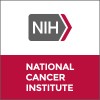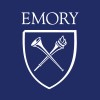
Nivolumab With or Without Ipilimumab in Treating Younger Patients With Recurrent or Refractory Solid...
Metastatic MelanomaRecurrent Ewing Sarcoma/Peripheral Primitive Neuroectodermal Tumor21 moreThis phase I/II trial studies the side effects and best dose of nivolumab when given with or without ipilimumab to see how well they work in treating younger patients with solid tumors or sarcomas that have come back (recurrent) or do not respond to treatment (refractory). Immunotherapy with monoclonal antibodies, such as nivolumab and ipilimumab, may help the body's immune system attack the cancer, and may interfere with the ability of tumor cells to grow and spread. It is not yet known whether nivolumab works better alone or with ipilimumab in treating patients with recurrent or refractory solid tumors or sarcomas.

A Phase I Trial of Anti-GD2 T-cells (1RG-CART)
Relapsed or Refractory NeuroblastomaThe purpose of this first in human study is to determine the safety and feasibility of 1RG-CART therapy in patients with relapsed or refractory neuroblastoma. 1RG-CART therapy is a novel immunotherapy under investigation in which patients have their T-cells (a type of white blood cell) collected and modified in the laboratory, before they are given back to the patient. The T-cells are modified to express a chimeric antigen receptor (CAR) which targets disialoganglioside (GD2), a marker expressed on the surface of neuroblastoma cells.

A Phase I Trial of T Cells Expressing an Anti-GD2 Chimeric Antigen Receptor in Children and Young...
SarcomaOsteosarcoma2 moreBackground GD2 is a well-characterized tumor antigen in neuroblastoma, which is also expressed on osteosarcomas and some other sarcomas. T cells expressing 1st generation anti-GD2 chimeric antigen receptors (CARs) were safe and mediated modest antitumor activity in some patients with refractory neuroblastoma. A 3rd generation anti-GD2-CAR (GD2-CAR.OX40.28.z.ICD9) has been produced and holds promise for increased activity compared to the 1st generation GD2-CAR already studied in clinical trials. As an added safety measure, the vector includes a suicide switch comprising a caspase dimerization domain (ICD9) that can be activated by a small molecule to induce death of the genetically engineered cells if they were induce untoward toxicity. Objectives Primary:Determine the feasibility of producing anti GD2-CAR cells meeting the established release criteria and to assess the safety of administering escalating doses of anti-GD2-CAR engineered T cells in children and young adults with GD2+ solid tumors, including neuroblastoma, following cyclophosphamide-based lymphodepletion. Secondary: Determine if administration anti-GD2-CAR engineered T cells mediate antitumor effects in children and young adults with GD2+ solid tumors; Measure persistence of adoptively transferred anti-GD2-CAR T cells and correlate this with antitumor effects; Extend information regarding the prevalence and intensity of GD2 expression in non-neuroblastoma, non-osteosarcoma solid tumors in children and young adults; If unacceptable toxicity occurs that is possibly, probably or likely related to anti-GD2-CAR T cells, assess the capacity for AP1903, a dimerizing agent, to mediate clearance of the genetically engineered cells and resolve toxicity; and Assess toxicity of AP1903 if administered to mediate clearance of anti-GD2-CAR T cells. Eligibility Patients 1-35 years of age, at least 15 kg, with osteosarcoma or a GD2+ solid tumor (including neuroblastoma) that has recurred after or not responded to standard therapy and is deemed incurable by standard therapy. Design After apheresis to collect T cells for transduction, patients receive cyclophosphamide 1800mg/m(2)/d as a lymphodepleting regimen. A phase I cell dose escalation scheme will used at 4 dose levels (1 x 10(5) transduced T cells/kg; 1 x 10(6) transduced T cells/kg; 3 x 10(6) transduced T cells/kg; and 1 x 10(7) transduced T cells/kg), using a standard 3 plus 3 dose escalation design. An expanded group of a total of 12 patients will be treated at the highest dose, comprising at least 6 osteosarcoma patients. Patients will be monitored for toxicity, antitumor effects and persistence of anti-GD2-CAR T cells. Patients with a PR, SD may receive a 2nd cycle at the next higher dose level a minimum of 60 days following completion of the first cycle if eligibility criteria are met. A maximum of 36 patients may be treated on this study. Given that there is likelihood that some patients with non-osteosarcoma will not meet the criteria for GD2 expression to be eligible for enrollment, up to 72 subjects will be screened to enroll a maximum of 36 patients for treatment. Up to 2-3 patients will be accrued per month, and therefore this study may require up to 2-3 years to complete enrollment and treatment.

131I-MIBG Alone VS. 131I-MIBG With Vincristine and Irinotecan VS131I-MIBG With Vorinostat
NeuroblastomaThis study will compare three treatment regimens containing metaiodobenzylguanidine (MIBG) and compare their effects on tumor response and associated side effects, to determine if one therapy is better than the other for people diagnosed with relapsed or persistent neuroblastoma.

Aflac ST0901 CHOANOME - Sirolimus in Solid Tumors
Ewing's SarcomaOsteosarcoma14 moreThe best treatment for recurrent cancers or those that do not respond to therapies is not known. Typically, patients with these cancers receive a combination of cancer drugs (chemotherapy), surgery, or radiation therapy. These treatments can prolong their life but may not offer a long-term cure. This study proposes using a drug called Sirolimus in combination with common chemotherapy drugs to treat patients with recurrent and refractory solid tumors. Sirolimus has been found to inhibit cell growth and to have anti-tumor activity in pediatric solid tumors in previous studies and, therefore, has the potential to increase the effectiveness of the chemotherapy drugs when given together. This study wil investigate the highest dose of Sirolimus that can be given orally with other oral chemotherapy drugs. Cohorts of 2 subjects will be started at the minimum dose. The dose will be increased in the next 2 subjects as long as there were no major reactions in the previous groups. This study will also seek to learn more about the side effects of sirolimus when used in this combination and what effects the drug has on the white cells and the immune system. Successful use of this drug will impact the cancer population greatly by providing an increased chance of survival to those with resistant or recurrent cancers.

Cyclophosphamide, Topotecan, and Bevacizumab (CTB) in Patients With Relapsed/Refractory Ewing's...
NeuroblastomaSarcomaThe purpose of this study is to find out what effects, good and/or bad treatment with a new combination of drugs, cyclophosphamide, topotecan, and bevacizumab has on the patient and their cancer. The medications, cyclophosphamide and topotecan, are standard drugs often used together for the treatment of cancer in children with either Ewing's sarcoma or neuroblastoma. Bevacizumab is an experimental drug called an antibody that targets a protein important in the growth of cancer cells called vascular endothelial growth factor (VEGF). VEGF is made by tumor and other surrounding cells to help make blood vessels needed for the growth and spread of cancer cells in the body. The way that bevacizumab works is to stop the cancer cells from making their own blood supply, causing the tumor to stop growing bigger or from spreading. In adult clinical trials, bevacizumab has shown promising anti-cancer activity in patients with cancer of the colon/rectum (colorectal) and breast. It has been approved by the Food and Drug Administration (FDA) for use in patients with colorectal cancer but not in cancers found in children. Bevacizumab has been tested in early clinical studies in children and has been shown to be safe. Other goals of this study will include research tests designed to test the following changes in the patient or their cancer: to see how the body handles and breaks down bevacizumab (pharmacokinetics), to look at changes in proteins in the blood that may affect the way the cancer responds to the combination (angiogenic profile, angiogenesis associated serum biomarkers), to look at changes in genes that may affect how the cancer responds to treatment with this combination of medications (metabolic signature), and to monitor the effects of changes in the way the body grows and develops before and after bevacizumab is given.

Study of Donor Derived, Multi-virus-specific, Cytotoxic T-Lymphocytes for Relapsed/Refractory Neuroblastoma...
NeuroblastomaThis is a single-center, investigator-initiated, single-arm, pilot study of post-allogeneic transplant, adoptive immunotherapy for the treatment of patients with relapsed/refractory neuroblastoma expressing the mesenchymal tumor marker GD2. Three patients will be treated. The study will focus on the safety and efficacy of allogeneic, donor derived viral specific cytotoxic T-lymphocytes, retrovirally transduced to express a chimeric antigen receptor specific for disialoganglioside, GD2, expressed on neuroblastoma.

European Low and Intermediate Risk Neuroblastoma Protocol
LOW AND INTERMEDIATE PAEDIATRIC NEUROBLASTOMA AND NEONATAL SUPRARENAL MASSESThe European study, LINES 2009 (Low and Intermediate Risk Neuroblastoma European Study), groups together in a single protocol the treatment of all patients with "non high risk" neuroblastoma (NB), with stratification into two groups: low risk and intermediate risk. These two separate cohorts are included in one single protocol to enable patient data from these two groups to be entered into a common database, as the current prognostic classifications determining treatment may evolve further with subsequent more detailed molecular analysis of the tumours. 1. LOW RISK STUDY The Low Risk Study is proposed in order to: minimise the amount of treatment (chemotherapy and surgery) for all appropriate low risk patients, who in previous studies have been shown to have an excellent long-term outcome (as in the SIOPEN 99.1-2 infant neuroblastoma studies where the overall survival was greater than 97%(H. Rubie, JCO). improve the EFS and maintain the OS (overall survival) in L2 and Ms patients with a SCA(Segmental Cromosomal Aberration) genomic profile tumour (presence of any segmental chromosomal change (SCA)) by electively treating these patients with chemotherapy despite the absence of symptoms. 2) INTERMEDIATE RISK STUDY The Intermediate Risk Study is proposed in order to: reduce the amount of chemotherapy for differentiating histology INRG (International Neuroblastoma Risk Group) stage L2 NB and ganglioneuroblastoma nodular patients who in previous SIOPEN study have been shown to have an excellent long-term outcome; increase the amount of treatment (radiotherapy and 13-cis-RA (13-cis-Retinoic Acid) for poorly differentiated or undifferentiated histology INRG stage L2 NB or ganglioneuroblastoma nodular patients in order to improve the EFS registered in the previous SIOPEN study; improve the EFS (Event Free Survival) of MYCN (V-Myc myelocytomatosis viral related oncogene, NB derived ,avian )amplified INSS (International NB Staging System) stage 1 NB patients with the introduction of adjuvant treatment; maintain the very good results obtained in previous SIOPEN study for INRG stage M infants with a moderate treatment. NEONATAL SUPRARENAL MASSES The incidence of suprarenal tumours/masses has increased in the last decade due to the expanded use of prenatal ultrasonography in routine obstetric care and in the neonatal and early infancy care. The differential diagnosis of these masses ranges from benign (adrenal haemorrhage) to malignant processes (neuroblastoma, adrenal carcinoma). Knowledge on perinatal suprarenal masses, although based on a relatively large literature, is scattered amongst studies on very few cases with no methodical approach and often short follow up. Therefore, the optimal management of these masses has not been clearly defined. Neuroblastoma at this age is an intriguing entity with a very good prognosis in most cases. The SIOPEN Group, based on their results in the first multicenter European Trial for infants with neuroblastoma (INES) and the world-wide experience provided in the literature, is launching this European surveillance study (Multi-centre, non-blinded, one armed prospective trial) for these masses. Treatment: Observation

NK White Blood Cells and Interleukin in Children and Young Adults With Advanced Solid Tumors
Solid TumorsBrain Tumors3 moreBACKGROUND: Despite progress, some children and young adults with solid tumors still experience poor survival. Activated NK cells potently kill autologous pediatric solid tumors, and clinical grade procedures are available to generate large numbers of activated NK cells for adoptive cell therapy. OBJECTIVES: Primary objectives are: 1) to assess the feasibility of harvesting and expanding activated NK cells to meet escalating dose goals in Cohort A, 2) to assess the toxicity of infusing escalating doses of activated NK cells following lymphodepleting chemotherapy without rhIL15 (cohort A), and 3) to assess the toxicity of infusing NK activated cells with escalating doses of rhIL15 (cohort B) in pediatric patients with refractory malignant solid tumors. Secondary objectives are: 1) to identify biologically active doses of activated autologous NK cells plus or minus rhIL15 by monitoring changes in NK cell number, phenotype and function, 2) to assess pharmacokinetics and immunogenicity of rhIL15 in a pediatric population, and 3) assess antitumor effects and changes in FDG-PET following administration of activated NK cells to lymphopenic hosts plus or minus rhIL15. 4) to evaluate saftey and efficacy of subsequent cycles of autologous NK cell infusions in patients in cohort A who received benefit from the first NK cell infusion. ELIGIBILITY: Patients in Cohort A: 2-29 years with with refractory pediatric malignant solid tumors, Patients in Cohort B: 2-25 years with refractory pediatric malignant solid tumors. Adequate performance status and organ function, recovered from toxic effects of prior therapy, no requirement for systemic corticosteroids and no history of allogeneic stem cell transplantation. DESIGN: All patients receive pre-NK lymphodepleting chemotherapy with cyclophosphamide. Cohort A receives escalating doses of activated autologous NK cells to identify feasibility of generating cells and tolerability, and potentially identify an MTD. A1: 1x10(6) NK cells/kg A2: 1 x 10(7) NK cells/kg A3: 1 x 10(8) NK cells/kg If feasibility and acceptable toxicity is demonstrated for all doses in Cohort A, patients enrolled on cohort B will receive activated autologous NK cells plus escalating doses of rhIL15 using the following schema: B1: 1 x 10(7) NK cells/kg + rhIL15 0.25 mcg/kg/d IV x 10 B2: 1 x 10(7) NK cells/kg + rhIL15 0.5 mcg/kg/d IV x 10 B3: 1 x 10(7) NK cells/kg + rhIL15 1 mcg/kg/d IV x 10 B4: 1 x 10(7) NK cells/kg + rhIL15 2 mcg/kg/d IV x 10 Three patients will be enrolled at each dose level, with the dose level expanded to 6 if dose-limiting toxicity occurs. An expanded group of 12 patients will be treated at the highest tolerable dose level. DLT toxicity monitoring will continue for 21 days after the NK infusion, or 14 days after the last rhIL15 dose in Cohort B (whichever is later).

Chemotherapy in Treating Children With Neuroblastoma
NeuroblastomaRATIONALE: Drugs used in chemotherapy use different ways to stop tumor cells from dividing so they stop growing or die. Some tumors become resistant to chemotherapy drugs. Combining buthionine sulfoximine with chemotherapy may reduce resistance to the drug and allow more tumor cells to be killed. PURPOSE: Phase I trial to study the effectiveness of melphalan, buthionine sulfoximine, and G-CSF in treating children with progressive neuroblastoma that has not responded to previous therapy.
